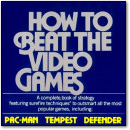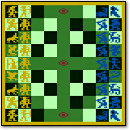[ Retro Scan of the Week ] Apple II Box for C64
Monday, March 25th, 2013 A scene from one of Benj’s recent nightmares.
A scene from one of Benj’s recent nightmares.
Hey mime! Yeah, you! Stop stealing my $599 Mimic Spartan Apple II+ compatibility box for the Commodore 64. I need it to open up a whole new world of hardware and software.
Just for a second, imagine if I could add these features to my Commodore 64: Apple II+ hardware and software capabilities, 64K RAM expansion, four software selectable Commodore 64 cartridge slots, non-dedicated 8-bit parallel port, and standard audio cassette deck capabilities for my C-64. Yep, all of that!
The suggested retail value of comparable products offering only these capabilities is over $2,200.00*. But the Spartan gives me much, much more, mime! Oh yes. By building on my investment in my Commodore 64 — an excellent introductory computer — I create a whole new system with both C-64 an Apple II+ capabilities.
There is a whole other world out there! And if you’d just give it back, a huge selection of Apple II+ hardware and software would be mine to explore. Call toll free for the Spartan dealer nearest you.
* Burp.
Discussion Topic of the Week: Open Discussion: Whoever posts a question first gets to decide what we’ll talk about this week.
—
See Also: MacCharlie’s FrankenMac (2013)






